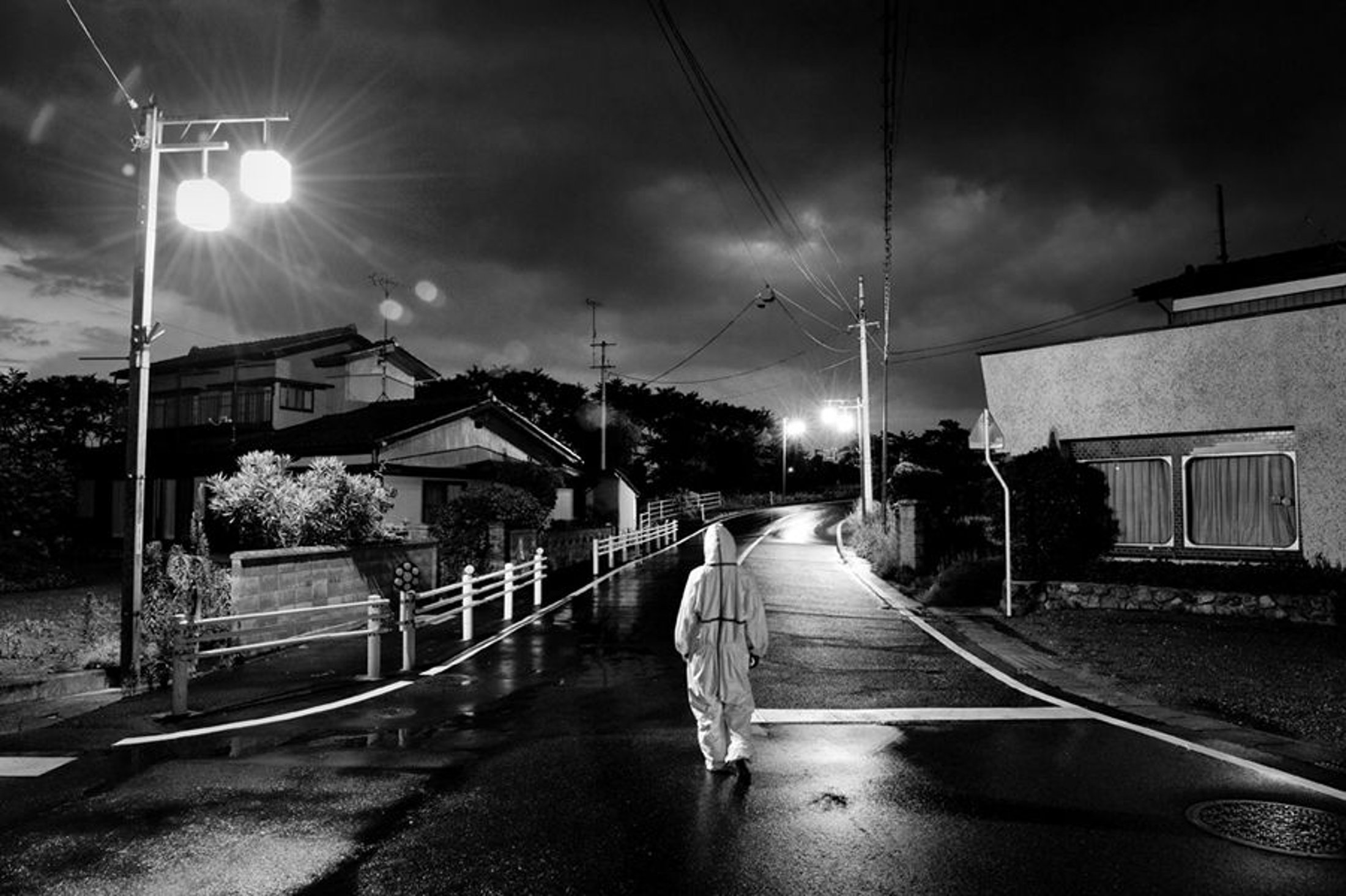On March 11, 2011 one of the worst earthquakes and tsunamis hit Japan and the Fukushima Daiichi nuclear power plant, damaging its safety and cooling systems. In a few days the cores of nuclear power plants number 1, 2, and 3 started melting down, and releasing massive amounts of radioactive radionuclides into the air and the ocean water.
The Japanese government created an evacuated area of 20 km around the nuclear power plant of Fukushima Daiichi. Starting April 20th, the Japanese government refused the admittance to the “No-Go Zone” to everyone, especially to journalists and photographers. But… during the first days of July, I went inside the No-Go Zone several times to document the situation together with my friend Pio d’Emilia, correspondent of Sky TG 24.
Inside the exclusion zone (and also outside up to 100 km from the nuclear power plant) the contamination has a “leopard skin” diffusion. In front of the main gate of Fukushima Daiichi nuclear power plant the geiger counter showed 300 times the normal level.
Empty cities were waiting for us. Only some abandoned dogs were wandering the streets, in desperate conditions. At the time of the evacuation, all the animals were abandoned. We encountered some cows away from their farms, enjoying total, if ephemeral, freedom.
The most physically repulsive sights were hundreds of decomposing carcasses of cows left unattended on farms. During the night several animal activists entered illegally inside the Exclusion Zone to rescue pets and other animals.
Most of the houses were locked, convenience stores full of goods, but some had been robbed, hospitals raided for drugs, and ATMs smashed and emptied. Stalkers started to rob inside the No-Go Zone, spreading radioactivity all around Japan.
Many people, most of them elderly, are still hiding out inside the zone, some of them with no visible protection. The most common thing I heard was: “Why should we bother leaving? We are old; there is no way that such radiation exposure could do us any harm. If I have to die, let me die on my own futon.”
One time per month, residents were allowed back to their houses to rescue their personal things. They wandered through their houses, shocked and traumatized among their memories.
Despite the massive contamination, life still goes on inside the “No-Go Zone” and many stories between life and death are still inside. The story is still ongoing…
— Pierpaolo Mittica
Editor's note: Pierpaolo Mittica has been recognized worldwide for his documentary photos and book about an earlier nuclear disaster, Chernobyl: The Hidden Legacy.

Feature
Fukushima “No Go” Zone
Following up on his ground-breaking coverage of the aftermath of the Chernobyl nuclear disaster, Pierpaolo Mittica shows us what remains of the homes, farms and neighborhoods around the Fukushima power plant in Japan.
View Images
Feature
Fukushima “No Go” Zone
Following up on his ground-breaking coverage of the aftermath of the Chernobyl nuclear disaster, Pierpaolo Mittica shows us what remains of the homes, farms and neighborhoods around the Fukushima power plant in Japan.
Fukushima “No Go” Zone
Following up on his ground-breaking coverage of the aftermath of the Chernobyl nuclear disaster, Pierpaolo Mittica shows us what remains of the homes, farms and neighborhoods around the Fukushima power plant in Japan.


